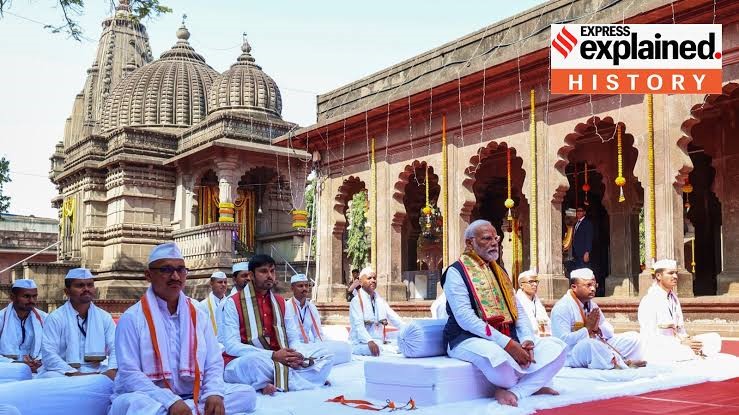
KALARAM TEMPLE

16.01.2024
KALARAM TEMPLE , Daily Current Affairs , RACE IAS : Best IAS Coaching in Lucknow
|
For Prelims:ABOUT KALARAM TEMPLE,Historical Significance |
Why in the news?
Recently, Prime Minister Modi during his roadshow visited the Kalaram Mandir, situated on the banks of the Godavari in Nashik.
ABOUT KALARAM TEMPLE:
- It is situated within the Panchvati area of Nashik City.
- The temple got its name from a black statue of the Lord Kala Ram, which means “Black Ram”.
- Lord Ram is supposed to have lived during his exile at the same point where the temple is built.
- Kalaram temple was built by Sardar Rangrao Odhekar in 1782, on the site of an old wooden temple.
- The construction work is said to have lasted for twelve years and 2000 persons being daily employed.
- Kalaram temple is one of the finest modern temples of Ramji in western India.
- The temple has a 17 feet high wall of plain dressed stone which surrounds a well kept enclosure 245 feet long and 105 broad.
- The Kalaram temple has 14 steps, which represent the 14 years of Ram’s exile.
- The 84 pillars in the temple represent the cycle of 84 lakh species that one has to complete in order to be born as a human.
- This temple has standing images of Lord Rama, Sita, Laxmana made up of black stone and are around 2 feet high.
Historical Significance
- This temple is the site of a landmark agitation led by Babasaheb Ambedkar demanding temple entry rights for Dalits more than 90 years ago.
- In 1930, B R Ambedkar and the Marathi teacher and social activist Pandurang Sadashiv Sane, known as Sane Guruji, led an agitation to demand access for Dalits to Hindu temples.
- This movement aimed to challenge the oppressive caste norms prevalent during the time.
- During the satyagraha, Ambedkar, along with his 15,000 Dalit followers, peacefully picketed the temple.
Source: Indian Express